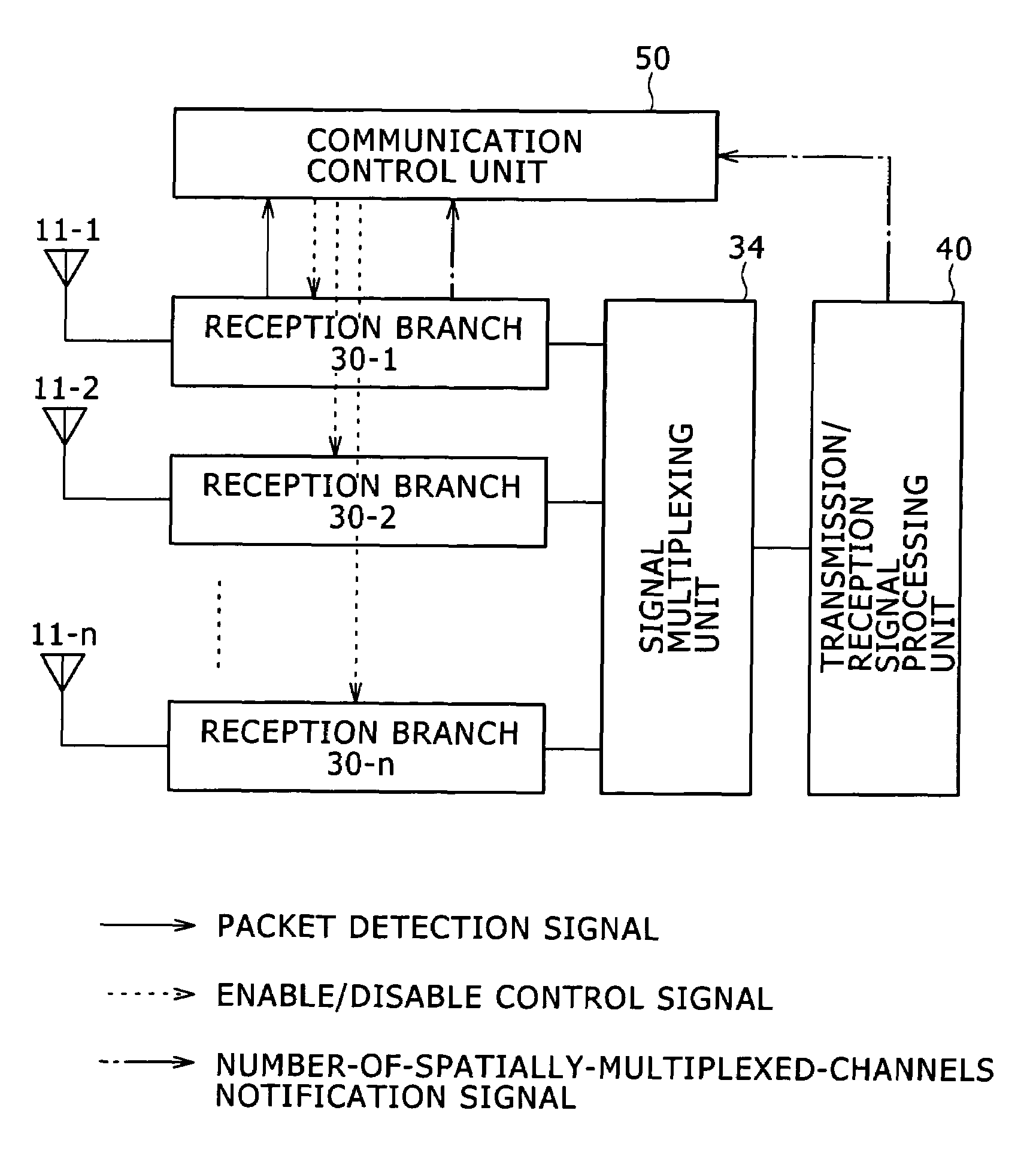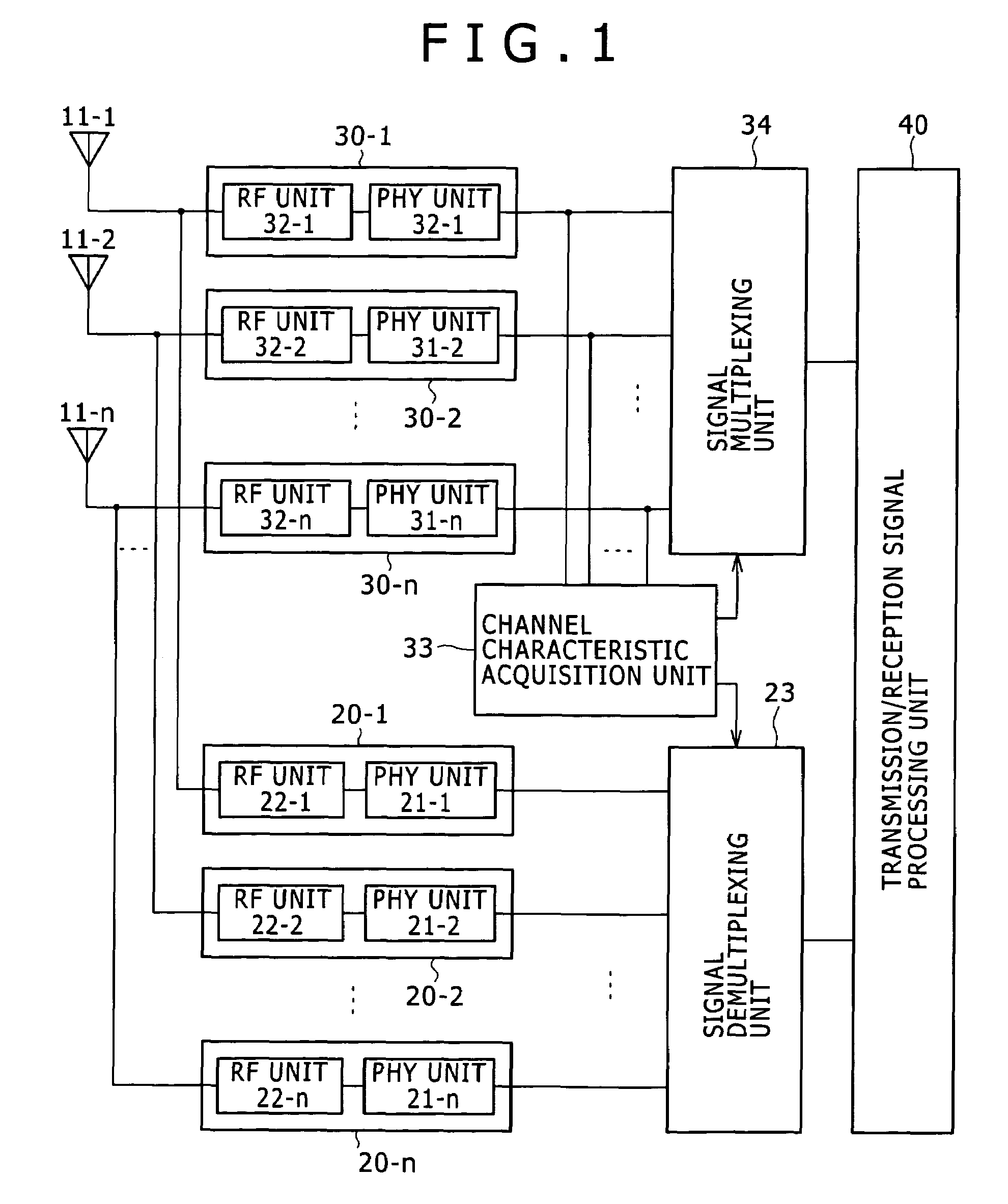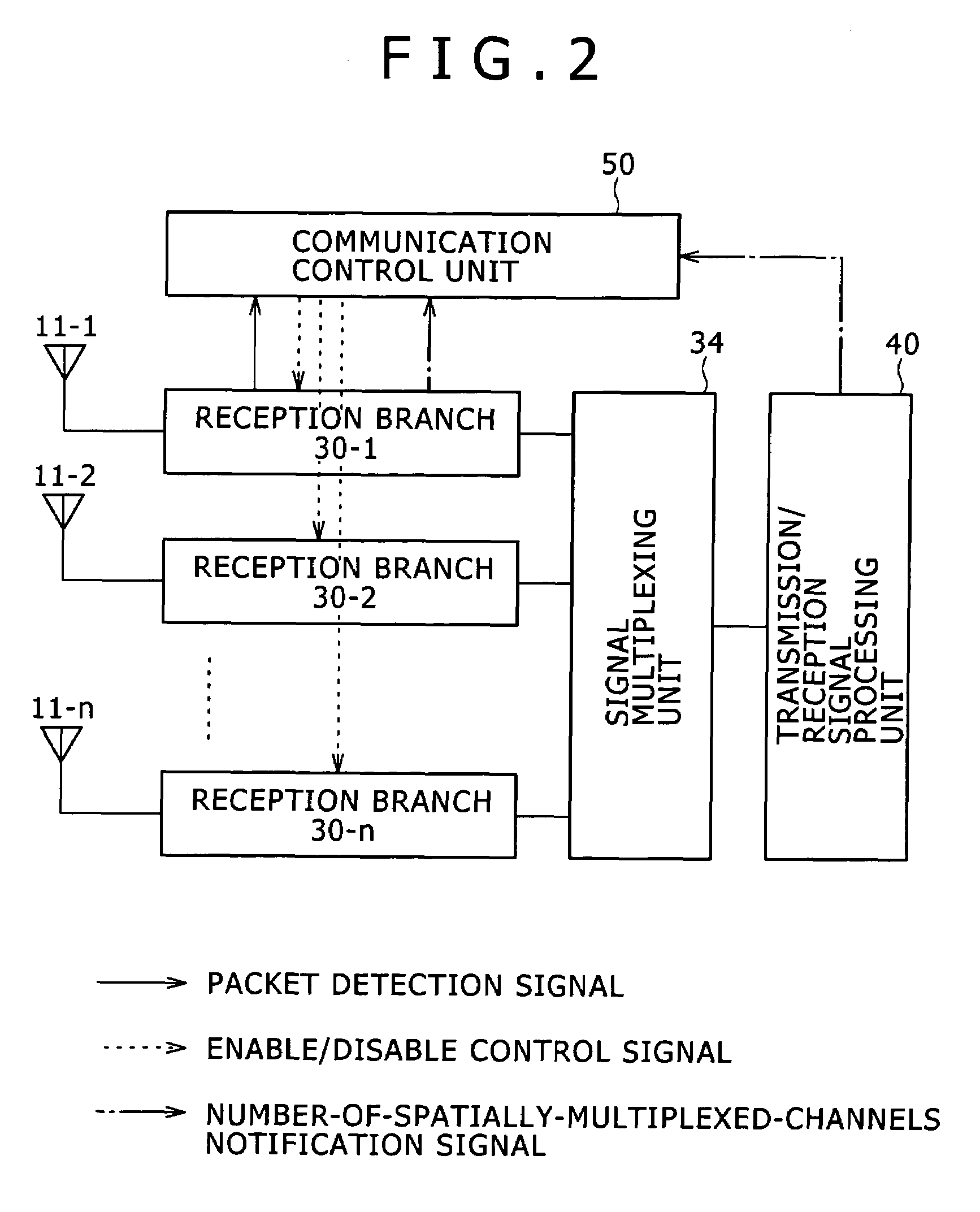Wireless communication apparatus, wireless communication method, and computer program
a wireless communication and wireless communication technology, applied in the field of wireless communication apparatus, wireless communication method, computer program, can solve the problems of affecting usability, and increasing rough proportion of power consumption, so as to achieve the effect of expanding transmission capacity
- Summary
- Abstract
- Description
- Claims
- Application Information
AI Technical Summary
Benefits of technology
Problems solved by technology
Method used
Image
Examples
first embodiment
[0105]the present invention will be described with reference to FIG. 5. In the example shown in FIG. 5, the number of spatially multiplexed channels to be transmitted is 3, and the number of reception branches of a wireless communication apparatus that performs MIMO reception n is also 3.
[0106]The wireless communication apparatus that receives a MIMO packet has 3 reception branches 1-3, but uses only the reception branch 1 to perform packet detection in a packet detection mode. In the case where a packet has actually been detected, the reception branch 1 informs the communication control unit 50 of the packet detection. The communication control unit 50 receives this information and instructs the reception branches 2 and 3 in a disabled state to activate and get ready to receive a re-AGC-purpose MIMO training signal.
[0107]The reception branch 1 outputs a packet detection signal and transitions to a reception mode. Further, the reception branch 1 receives a PHY header and outputs a s...
second embodiment
[0125]Next, the present invention will be described with reference to FIG. 8. In the example shown in FIG. 8, the number of spatially multiplexed channels to be transmitted is 3, and the number of reception branches possessed by the wireless communication apparatus as a receiver in MIMO transmission n is 4. In this case, the maximum (i.e., ideal) number of spatially multiplexed channels k is 3, which is smaller than the number of reception branches n (=4).
[0126]The wireless communication apparatus that receives a MIMO packet has 4 reception branches 1-4, and uses only the reception branch 1 to perform packet detection in a packet detection mode. In the case where a packet has actually been detected, the reception branch 1 informs the communication control unit 50 of the packet detection. The communication control unit 50 receives this information and instructs the reception branches 2, 3, and 4 in a disabled state to activate and get ready to receive a re-AGC-purpose MIMO training s...
third embodiment
[0157]Next, the present invention will be described with reference to FIG. 12. In the example shown in FIG. 12, the number of spatially multiplexed channels to be transmitted is 3, and the number of reception branches possessed by the wireless communication apparatus as a receiver in MIMO transmission n is 4. In this case, the maximum (i.e., ideal) number of spatially multiplexed channels k is 3, which is smaller than the number of reception branches n (=4).
[0158]The second embodiment is based on the premise that the number of spatially multiplexed channels of the packet to be transmitted is described in the PHY header bits. On the other hand, in the third embodiment, there is provided another method for detecting the number of spatially multiplexed channels. For example, the packet format may be designed in such a way that the number of spatially multiplexed channels is indicated with the code sequences of MIMO training sequences, instead of describing the number of spatially multi...
PUM
 Login to View More
Login to View More Abstract
Description
Claims
Application Information
 Login to View More
Login to View More - R&D
- Intellectual Property
- Life Sciences
- Materials
- Tech Scout
- Unparalleled Data Quality
- Higher Quality Content
- 60% Fewer Hallucinations
Browse by: Latest US Patents, China's latest patents, Technical Efficacy Thesaurus, Application Domain, Technology Topic, Popular Technical Reports.
© 2025 PatSnap. All rights reserved.Legal|Privacy policy|Modern Slavery Act Transparency Statement|Sitemap|About US| Contact US: help@patsnap.com



